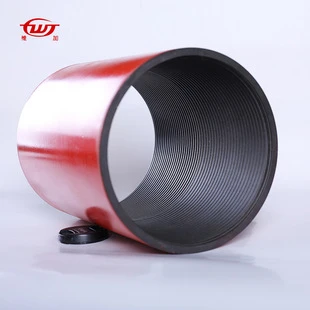- Afrikaans
- Albanian
- Amharic
- Arabic
- Armenian
- Azerbaijani
- Basque
- Belarusian
- Bengali
- Bosnian
- Bulgarian
- Catalan
- Cebuano
- Corsican
- Croatian
- Czech
- Danish
- Dutch
- English
- Esperanto
- Estonian
- Finnish
- French
- Frisian
- Galician
- Georgian
- German
- Greek
- Gujarati
- Haitian Creole
- hausa
- hawaiian
- Hebrew
- Hindi
- Miao
- Hungarian
- Icelandic
- igbo
- Indonesian
- irish
- Italian
- Japanese
- Javanese
- Kannada
- kazakh
- Khmer
- Rwandese
- Korean
- Kurdish
- Kyrgyz
- Lao
- Latin
- Latvian
- Lithuanian
- Luxembourgish
- Macedonian
- Malgashi
- Malay
- Malayalam
- Maltese
- Maori
- Marathi
- Mongolian
- Myanmar
- Nepali
- Norwegian
- Norwegian
- Occitan
- Pashto
- Persian
- Polish
- Portuguese
- Punjabi
- Romanian
- Russian
- Samoan
- Scottish Gaelic
- Serbian
- Sesotho
- Shona
- Sindhi
- Sinhala
- Slovak
- Slovenian
- Somali
- Spanish
- Sundanese
- Swahili
- Swedish
- Tagalog
- Tajik
- Tamil
- Tatar
- Telugu
- Thai
- Turkish
- Turkmen
- Ukrainian
- Urdu
- Uighur
- Uzbek
- Vietnamese
- Welsh
- Bantu
- Yiddish
- Yoruba
- Zulu
casing collar
Understanding Casing Collars in Oil and Gas Operations
In the oil and gas industry, the efficiency and safety of drilling operations heavily rely on the proper use of various components, with casing collars playing a critical role. Casing collars are specialized tools used in the completion phase of drilling that help secure the casing string in place within the wellbore, providing structural integrity and preventing collapse under the weight of the surrounding geological formations.
What are Casing Collars?
Casing collars are typically made of high-strength steel and are designed to bear significant loads. They are located at intervals along the casing, which is a series of steel pipes or tubes that are installed in the well to maintain its structure. The collars serve two primary functions they provide support for the casing and act as anchors that prevent the casing from being pulled out of the wellbore due to pressure changes or other forces.
Types and Functions
There are several types of casing collars, each serving unique purposes based on the specific requirements of a drilling operation. Some common types include
1. Casing Centralizers These collars help keep the casing centered in the wellbore, which is crucial for ensuring even cement distribution around the casing. Proper centralization minimizes the risk of erratic flow paths that could lead to poor cement bonding.
2. Float Collars These are installed at the bottom of the casing string and allow for the controlled flow of cement during the cementing operation. They have one-way valves that prevent backflow, ensuring that the cement can fill the annular space effectively.
3. Liner Hangers A type of casing collar specifically designed to suspend a liner (a partial casing string) within the well. The liner hanger allows for greater flexibility in drilling and completing deviated wells or specific zones within a reservoir.
casing collar

4. Packers While not traditionally classified as casing collars, packers often work in conjunction with them to create zonal isolation by sealing off sections of the wellbore. This is critical for enhancing production and preventing cross-flow between different formations.
Installation and Challenges
Installing casing collars is a precise process. The collars must be positioned accurately to withstand the forces they will encounter during drilling and production. Proper installation techniques are critical, as misalignment can lead to issues such as uneven cement placement, which can compromise well integrity and lead to costly repairs.
One of the challenges faced during installation is managing the weight of the casing string. As the depth of the well increases, so does the weight, which can lead to buckling or deformation of the casing if not managed carefully. Engineers must calculate the proper spacing and load distribution of casing collars to mitigate these risks.
The Role of Technology
Advancements in technology have significantly improved the manufacturing and installation processes for casing collars. Computer modeling and simulation allow engineers to predict the behavior of the casing structure under various conditions, ensuring that the design and placement of collars are optimized for safety and efficiency.
Additionally, the use of smart sensors in modern casing designs can provide real-time data on pressure, temperature, and structural integrity, allowing for proactive maintenance and intervention before failures occur.
Conclusion
Casing collars are vital components in the integrity and success of oil and gas drilling operations. Their design and implementation help ensure that wells are safe, efficient, and capable of producing the necessary resources. As drilling technology evolves, so too does the design and functionality of casing collars, making them an essential focus for engineers and operators in the field. By understanding and optimizing the use of casing collars, the oil and gas industry can continue to improve its operational safety and efficiency, paving the way for future exploration and production endeavors.
-
Tubing Pup Joints: Essential Components for Oil and Gas OperationsNewsJul.10,2025
-
Pup Joints: Essential Components for Reliable Drilling OperationsNewsJul.10,2025
-
Pipe Couplings: Connecting Your World EfficientlyNewsJul.10,2025
-
Mastering Oilfield Operations with Quality Tubing and CasingNewsJul.10,2025
-
High-Quality Casing Couplings for Every NeedNewsJul.10,2025
-
Boost Your Drilling Efficiency with Premium Crossover Tools & Seating NipplesNewsJul.10,2025







